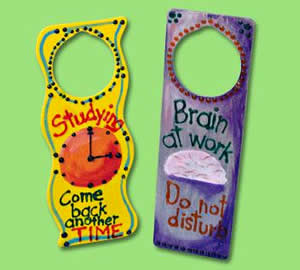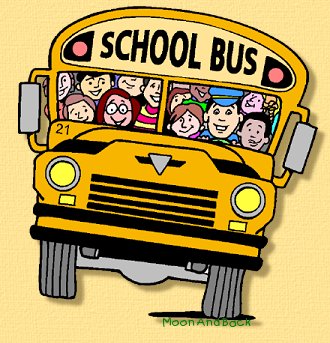![image_thumb2_thumb_thumb_thumb_thumb[1]](http://lh3.googleusercontent.com/-EklOuZvUz0Q/VcLT0TL3JGI/AAAAAAAAG8Q/XC0osRhwzfU/image_thumb2_thumb_thumb_thumb_thumb%25255B1%25255D_thumb.png?imgmax=800)
Having trouble viewing this email? Read it online.
(You will also find links to great websites for families there.)
 Pets Aloud! (Ages 4-10) Saturday, September 26, 2015. 10:00 AM - 11:00 AM. Registration is required and begins September 12th. Join us for a pet themed storytime and craft - then visit some furry friends in the lobby! Courtesy of the Somerset Regional Animal Shelter!
Pets Aloud! (Ages 4-10) Saturday, September 26, 2015. 10:00 AM - 11:00 AM. Registration is required and begins September 12th. Join us for a pet themed storytime and craft - then visit some furry friends in the lobby! Courtesy of the Somerset Regional Animal Shelter!
Pet-Palooza Adoption Celebration! (All Ages) No registration required. Held in the lobby. Saturday, September 26, 10:00 AM - 2:00 PM. Meet some cool cats who need loving homes! And learn more about the work of the Somerset Regional Animal Shelter!
 Fall Frolics-Crayon Rubbings (Ages 3-9) Monday, September 28, 2015 4:30 PM - 5:30 PM Registration is required. Celebrate the season with a story and craft. Have some favorite leaves? Preserve their shapes forever!
Fall Frolics-Crayon Rubbings (Ages 3-9) Monday, September 28, 2015 4:30 PM - 5:30 PM Registration is required. Celebrate the season with a story and craft. Have some favorite leaves? Preserve their shapes forever!
 Storytimes (Tues. 10 & 1:30), Toddler Times (Wed. & Fri. 10), and Baby Times (Thur. 9:30) continue through Oct. 16th. No registration required.
Storytimes (Tues. 10 & 1:30), Toddler Times (Wed. & Fri. 10), and Baby Times (Thur. 9:30) continue through Oct. 16th. No registration required.
OCTOBER PROGRAMS: Click HERE to register.


Click HERE to register for October Programs.
Around the Community:
Dozens of area museums are participating – click here for venues.

Special Event: Smithsonian Magazine's
Museum Day Live!
Sept. 26, all day * Museum-wide
Mark your calendar! The New Jersey State Museum will open its doors free of charge on Saturday, September 26, 2015, as part of Smithsonian Magazine's Museum Day Live! The Museum will offer free planetarium shows all day and variety of free, family-friendly programs. To get your FREE ticket, click here.
Visitors can also bring their natural history specimens for identification and we'll have a food truck on-site for visitor convenience.
Schedule of events
9:00 - 4:00pm Paleo Lab
Stop by to visit & ask questions with paleontologists at work on ancient turtles, crocodiles and dinosaurs.
9:00 - 4:00 pm Meet the Scientist & Artifact Identification
Resident expert geologist and paleontologist David Parris will be available to identify your specimens and walk you through the highlights of our Natural History collections. Dave's encyclopedic knowledge will amaze and astound you. You will never look at the dirt in your backyard the same again!
11:00 am & 2:00 pm Meet the Scientist: The Big Horn Basin Dinosaur Project, Auditorium
Paleontologist Jason Schein is back from Montana and Wyoming to present to you this year's exciting dinosaur discoveries!
1:00 & 3:00 pm Curator Talk - New Jersey's Original People, Lower Level
Go on a journey to explore the story of the migration of Paleoindians across New Jersey 13,000 years ago then learn the story of the Lenape in New Jersey.
Planetarium schedule:
12 noon - Rusty Rocket's Last Blast, for families with young children
1:00 pm - Laser Space Chase, for general audiences
2:00 pm - To Space & Back, for general audiences
3:00 pm - Black Holes, for general audiences
For complete event details and Planetarium descriptions click here.
ANNUAL RIVERFEST IN BOUND BROOK THIS SATURDAY

An Imagination Celebration! REALLY ROSIE
Book and Lyrics by Maurice Sendak
Music by Carole King
October 2 – 18, 2015
Fridays at 7:30PM
Saturdays and Sundays at 4:00PM
Rosie, the sassiest kid on her block of Brooklyn’s Avenue P, entertains herself and her friends by acting out show biz fantasies, notably directing and starring in an Oscar winning movie. Written by the author and illustrator of Where the Wild Things Are and other popular children’s books, Really Rosie is a jewel for children and adults. Author, Maurice Sendak, is a winner of a Caldecott Medal, National Book Award, and a National Medal of the Arts. Composer, Carole King, is a winner of a National Academy of Songwriters Lifetime Achievement Award, a Grammy Trustees Award, the Songwriters Hall of Fame, and the Library of Congress’s Gershwin Award for Popular Song. Age Recommendation: Pre-K through Adult PURCHASE TICKETS

 Get outside at these pick-your-own apple farms this fall for a great family-bonding experience.
Get outside at these pick-your-own apple farms this fall for a great family-bonding experience.
 It's fall, which means it is time to hit one of NJ's great farms and pick-your-own apples with the family. Here are some of the best spots across the state to go apple picking.
It's fall, which means it is time to hit one of NJ's great farms and pick-your-own apples with the family. Here are some of the best spots across the state to go apple picking. 
Let Your Fingers do More Walking:

Today is Elephant Appreciation Day, a day to celebrate all the cool things about elephants -- including some amazing numbers behind those big gray bodies. First, there's that amazing trunk, which has no bones but has 40,000 muscles! The trunk can suck up 10 gallons of water per minute. It also has two "fingers" at the tip that can grab and lift objects as heavy as 770 pounds. Then there are those giant feet: the distance around one foot is about 1/2 the elephant's height. So if you measure a big footprint in the mud, you'll know the size of the elephant was who made it! And finally even their toes are interesting: they have 5 toes on each foot, but on African elephants only 3 or 4 of those have toenails. Next time you see an elephant, check them out -- but since elephants can weigh up to 6 tons, just make sure you don't get stepped on.
Wee ones: Elephant tusks can grow up to 10 feet long! Who's taller, you or that tusk? (Find out your height in feet!)
Little kids: If an elephant can suck up 10 gallons of water per minute, how much can it drink in 4 minutes? Count up by 10s! Bonus: African elephants have 4 toenails on each front foot and 3 on each back foot. But Asian elephants have 5 on each front foot, 4 on each back foot. How many more toenails does an Asian elephant have?
Big kids: An elephant's teeth include 12 premolars, 12 molars, and 2 tusks, which count as teeth too. How many teeth is that in total? Bonus: An elephant can weigh up to 6 tons. That's the same as how many 4,000-pound cars? (Reminder if needed: A ton equals 2,000 pounds.)
The sky's the limit: If some people and some African elephants take a walk, and together they have 58 toenails, how many of each creature are walking? (Reminder: African elephants have 4 toenails per front foot and 3 per back foot. For the humans, count only their toenails, not fingernails.)
Answers (and more questions) here.
 Science Friday: The Science of Story Time
Science Friday: The Science of Story Time

Children reading, from Shutterstock
The ritual of bedtime reading isn’t just about getting junior to (finally) go to sleep. Studies show reading with kids has positive effects ranging from increased vocabulary to greater success reading independently. What is it about Goodnight, Moon and If You Give a Moose a Muffin that boosts children’s literacy? Psychologist Jessica Montag says it might have to do with the words that kids’ books contain. She walks Ira through her recent study in Psychological Science.
And if you’re looking for a great book to share with the child in your life, why not make it a great science book? Brain Pickings editor Maria Popova and kids’ book author Jacob Berkowitz join Ira to help compile a reading list for science-curious kids. Read or listen to this story here.
What Does Watching TV vs. Reading a Good Book Do to Your Brain? Katie Medlock 
… If you’re like most of America, according to the Bureau of Labor Statistics’ 2014 report, people over 15 watch an average of 2.5 hours of TV per day during the workweek, while only reading for leisure about a half hour.
… it’s estimated that 42 percent of college graduates will never read another book after they finish their degrees.
… A Japanese study earlier this year found that TV watching actually can alter the composition of your brain. Studying 276 children and teens led to the discovery that higher amounts of time in front of the tube increased frontal lobe grey matter, yet lowered verbal IQ.
Another study, however, discovered lasting positive results from reading a novel. They performed MRIs to college students before, during and after reading a novel and found increased connectivity in the parts of the brain responsible for language receptivity—so much so that the heightened connectivity was retained days later, much like “muscle memory.”
Dr. Gregory Berns, of the Emory University study, stated, “At a minimum, we can say that reading stories—especially those with strong narrative arcs—reconfigures brain networks for at least a few days. It shows how stories can stay with us. This may have profound implications for children and the role of reading in shaping their brains.” Pretty profound, indeed.
What else can reading do for the mind? A study at the University of Sussex found that participants who were stressed needed only six minutes of reading for their heart rates and muscle tension to subside. Six minutes! …
With most 15-19 year-olds only reading 9 minutes per day (compared to 2.6 hours of TV) and 75 and older folks reading an hour per day (yet, 4.4 daily hours of TV), perhaps tipping the scale toward paperbacks could make a big dent in our overall stress levels. Sure, unplugging from the day in front of the tube can feel like it’s just what we need, but what if we really unplugged and, instead, picked up a good book? With websites such as Good Reads and What Should I Read Next? on our sides, this can become a (non-virtual) reality. Read full article.





















 slower-paced setting, consider also coming to our
slower-paced setting, consider also coming to our .jpg)



 (iStock) Check out this post from pediatric occupational therapist Angela Hanscom, author of
(iStock) Check out this post from pediatric occupational therapist Angela Hanscom, author of 

